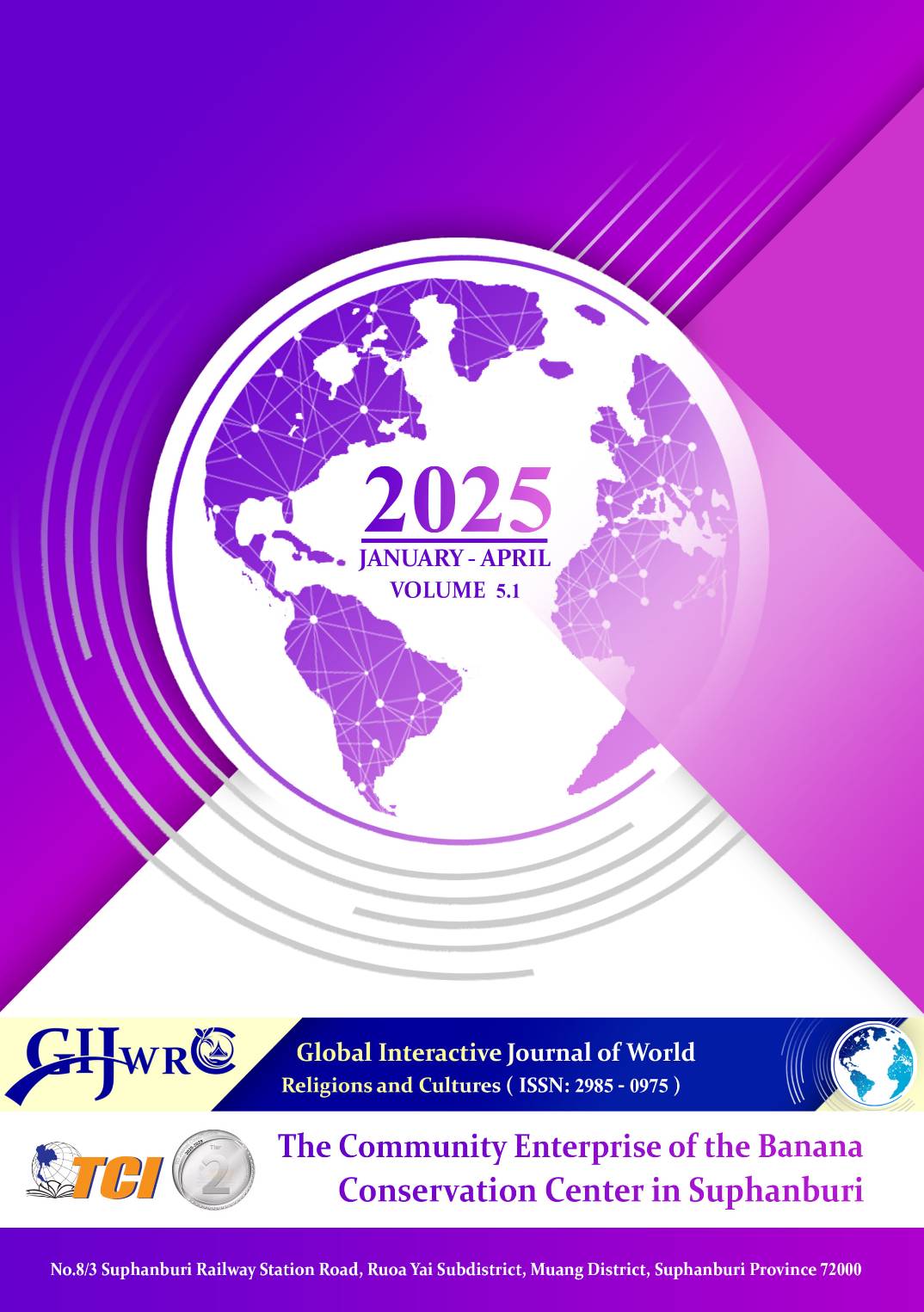CONSTRUCTING SHANDONG LV OPERA GUIDEBOOK FOR TEACHING FIRST-YEAR STUDENTS AT ZIBO NORMAL COLLEGE, SHANDONG PROVINCE
Main Article Content
Abstract
This study explores Shandong LV Opera as an essential part of Chinese culture, reflecting the way of life and beliefs of Chinese traditions through its lyrical themes, musical expressions, and performance practices. The objectives of this study were: (1) to study Shandong LV Opera from key informants; (2) to construct a Shandong LV Opera guidebook for teaching first-year students at Zibo Normal College; (3) to experiment with teaching by using the Shandong LV Opera guidebook for first-year students at Zibo Normal College; and (4) to evaluate the effectiveness of the guidebook in the teaching process.
This research employed a mixed-method approach, combining qualitative and quantitative methodologies. The qualitative research tool was an interview guideline used to gather insights from four key informants, while the quantitative research focused on a population of 40 first-year vocal major students at Zibo Normal College, with a sample of 15 students selected through simple random sampling. Data analysis was conducted using descriptive statistics, and the research hypothesis required formative and summative scores of at least 70/80 points for validation.
The findings revealed that (1) the lyrics of Shandong LV Opera deeply embody regional folk customs, ethics, and cultural values, using simple, dialect-infused language to reflect daily life themes such as farming, marriage, and family dynamics. These lyrics uphold traditional virtues while integrating modern social values, demonstrating the opera’s role in preserving and evolving Chinese cultural identity; (2) the guidebook developed for this study consists of five chapters covering the development status of vocal music for first-year students, principles of vocal music, vocal practice songs, an overview of Shandong LV Opera, and an analysis of its singing techniques; (3) the experimental teaching phase was conducted over 16 lessons, with a structured lesson plan outlining time allocation and content for each session; and (4) the average formative test score was 78.27, while the summative test score averaged 84.75, indicating that the guidebook was both effective and validated for teaching. This study highlights the significance of Shandong LV Opera in Chinese culture and traditions, emphasizing its pedagogical value in vocal music education.
Article Details
References
Ge, Z. (2014). Research on Shandong LV opera. Northern Music (6), pp. 103-104.
Kong, Y. (2017). The formation and development of LV opera music. Drama House (16), pp. 42-43.
Lan, X. (2018). Research on the characteristics and singing techniques of Shandong Lv opera singing. Collection (14), pp. 34-35.
Li, H. (2011). The social ideals of the lower class as seen in classic opera repertoires Taking Shandong LV opera as an example. Wuhan Journal, 1(4), pp. 47-51.
Li, Y., & An, X. (2001). On the standardization of LV opera music “ban-style”. Drama Series (4), pp. 69-70.
Liu, D. (2008). Discussion on opera music teaching in higher education—Analysis of two singing sections from Shandong LV opera “Li Ersao Remarries”. Sichuan Drama (2), pp. 107-108.
Liu, Z. (2014). On the performance forms and stage aesthetics of LV opera. Oriental Art (1), pp. 82-83.
Lou, N. (2019). The inheritance and Development of Lu Opera Art. Northern Music (16), pp. 78-79.
Ma, G. (1998). The rise, fall, and development of LV opera. Development Forum (9), pp. 72-73.
Wang, T. (2019). Review of the research status of Shandong LV opera. Yellow River Sound (3), pp. 26-27.
Zhang, Y. (2012). A review of Shandong LV opera research since the new century. Anhui Literature: Second Half of the Month (8), pp. 97-98.


